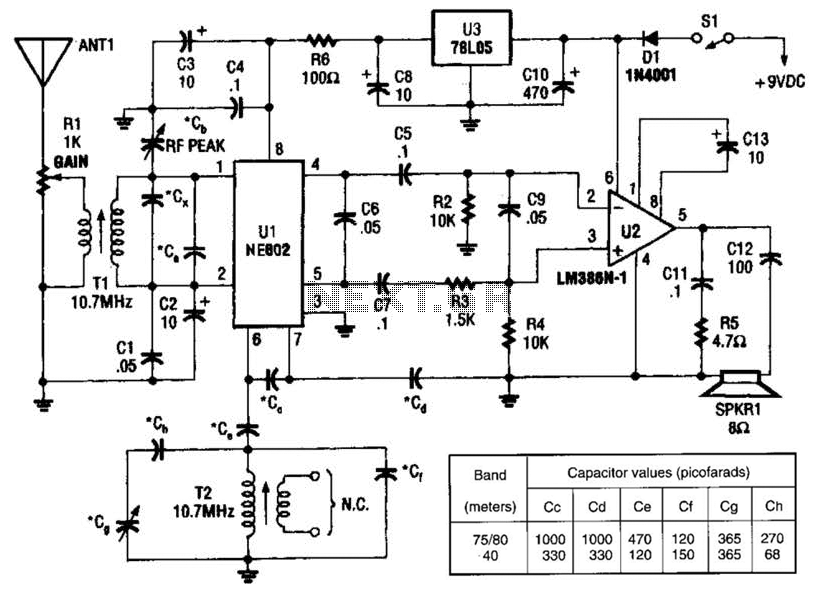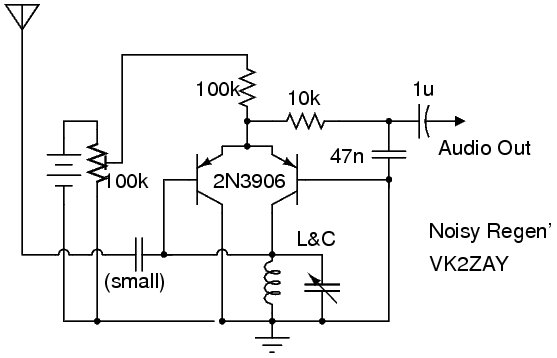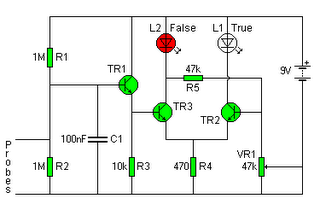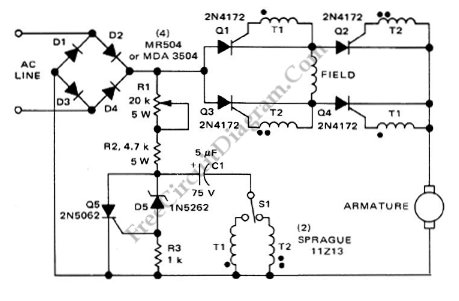
Ne602 Direct Conversion Receiver Circuit

An NEC602 is utilized as a mixer with a zero intermediate frequency (IF) output, while U2 functions as an audio amplifier. This receiver is mainly designed for single sideband (SSB) and continuous wave (CW) signals. T1 and T2 are 10.7-MHz IF coils commonly found in AM/FM transistorized radios.
The NEC602 is a versatile integrated circuit that operates effectively in low-power applications. Its primary function as a mixer allows it to combine radio frequency (RF) signals with a local oscillator signal, resulting in a zero IF output. This configuration simplifies the design of the receiver by eliminating the need for additional filtering stages typically required in conventional superheterodyne receivers.
The audio amplifier (U2) connected to the output of the NEC602 is responsible for amplifying the demodulated audio signals, ensuring they are at a suitable level for further processing or output to speakers or headphones. This stage is crucial for providing clear audio reproduction of the received SSB and CW signals.
The use of 10.7-MHz IF coils (T1 and T2) is standard practice in many radio applications, particularly in AM/FM receivers. These coils are optimized for the 10.7-MHz frequency, which is the typical IF frequency for FM broadcast receivers. In the context of this circuit, they facilitate the filtering and amplification of the signals before they reach the mixer stage, enhancing overall performance and selectivity.
This receiver design is particularly advantageous for amateur radio enthusiasts and applications where SSB and CW communications are prevalent, as it provides a compact and efficient solution for receiving and processing these types of signals. The combination of the NEC602 mixer and the audio amplifier allows for a streamlined approach to radio signal processing, making it suitable for a variety of radio communication projects. An NEC602 is used as a mixer with a zero IF frequency output, U2 acts as an audio amplifier. This receiver is primarily for SSB and CW signals. Tl and T2 are 10.7-MHz IF coils used in AM/FM transistorized radios, etc. or in any similar indicator. 🔗 External reference
The NEC602 is a versatile integrated circuit that operates effectively in low-power applications. Its primary function as a mixer allows it to combine radio frequency (RF) signals with a local oscillator signal, resulting in a zero IF output. This configuration simplifies the design of the receiver by eliminating the need for additional filtering stages typically required in conventional superheterodyne receivers.
The audio amplifier (U2) connected to the output of the NEC602 is responsible for amplifying the demodulated audio signals, ensuring they are at a suitable level for further processing or output to speakers or headphones. This stage is crucial for providing clear audio reproduction of the received SSB and CW signals.
The use of 10.7-MHz IF coils (T1 and T2) is standard practice in many radio applications, particularly in AM/FM receivers. These coils are optimized for the 10.7-MHz frequency, which is the typical IF frequency for FM broadcast receivers. In the context of this circuit, they facilitate the filtering and amplification of the signals before they reach the mixer stage, enhancing overall performance and selectivity.
This receiver design is particularly advantageous for amateur radio enthusiasts and applications where SSB and CW communications are prevalent, as it provides a compact and efficient solution for receiving and processing these types of signals. The combination of the NEC602 mixer and the audio amplifier allows for a streamlined approach to radio signal processing, making it suitable for a variety of radio communication projects. An NEC602 is used as a mixer with a zero IF frequency output, U2 acts as an audio amplifier. This receiver is primarily for SSB and CW signals. Tl and T2 are 10.7-MHz IF coils used in AM/FM transistorized radios, etc. or in any similar indicator. 🔗 External reference





